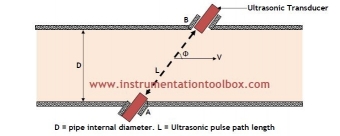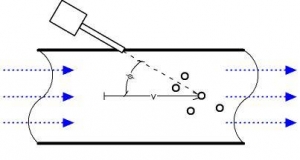超声波液体流量测量
Bronkhorst ES-FLOW™ 超声波技术
Bronkhorst® ES-FLOW™ 流量计的运行基于超声波在微小的直传感器管内的传播,无障碍物或死区。在传感器管外表面有多个传感器盘,通过径向振荡产生超声波。每个传感器都可发送和接收,因此所有的上行和下行组合都被记录和处理。通过准确测量记录之间的时间差(纳秒范围),可以计算出流速和声速。ES-FLOW™可测量0-1500 ml/min的液体体积流量。
由于仪表能检测被测液 体的实际声速,因而无需对每种液体进行重新校准。

产品链接: ES-FLOW™
其他(传统)超声波流量测量原理
(来源:维基百科。请注意,这些技术与Bronkhorst在其ES-FLOW系列中应用的技术完全不同,因此无法进行比较。)
时差法原理超声波流量计测量在流动流体中传播的超声波脉冲的传播时间差。这个时间差是流体沿超声波束路径的平均速度的量度。通过使用绝对传播时间,可以计算平均流体速度和声速。该测量原理仅适用于大口径管和大量程。 |
 |
多普勒效应原理超声波流量计量的另一种方法也不适用于超小的流量,采用多普勒频移,该频移是由超声波束从声波反射材料(例如流动流体中的固体颗粒或夹带的气泡)或流体本身的湍流(流体是清洁的)反射产生的。 |
 |

